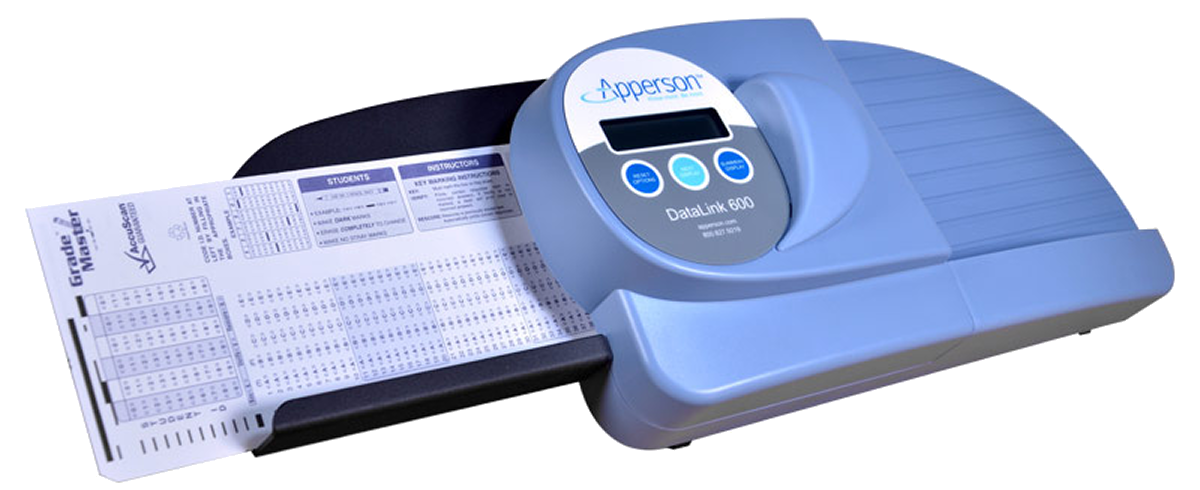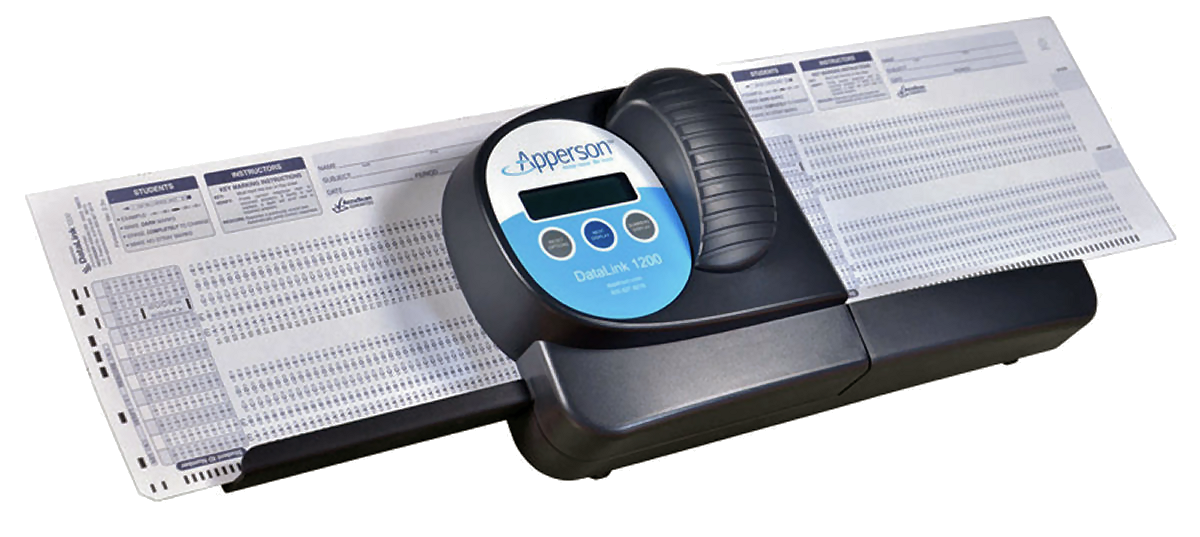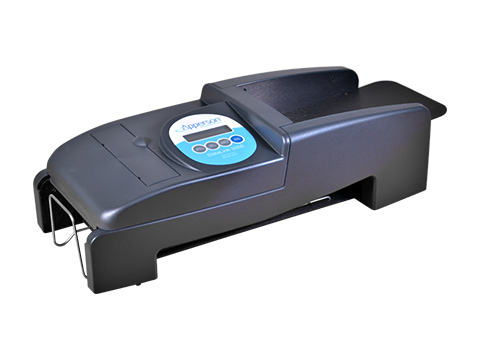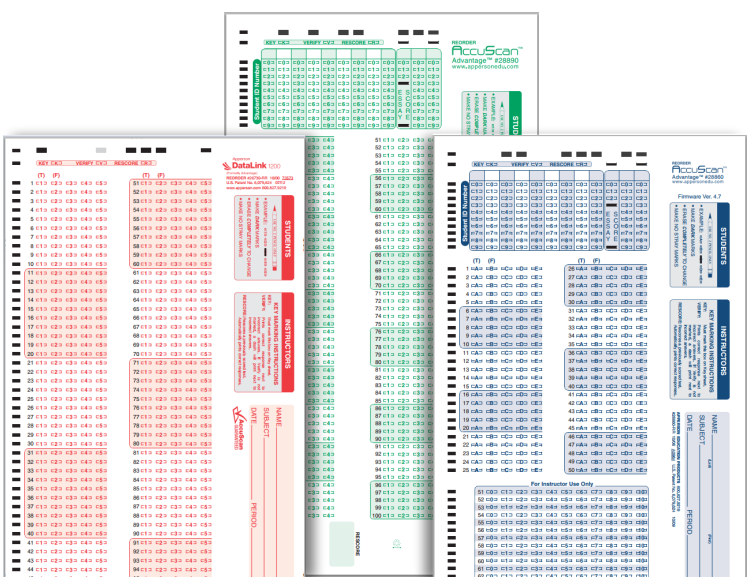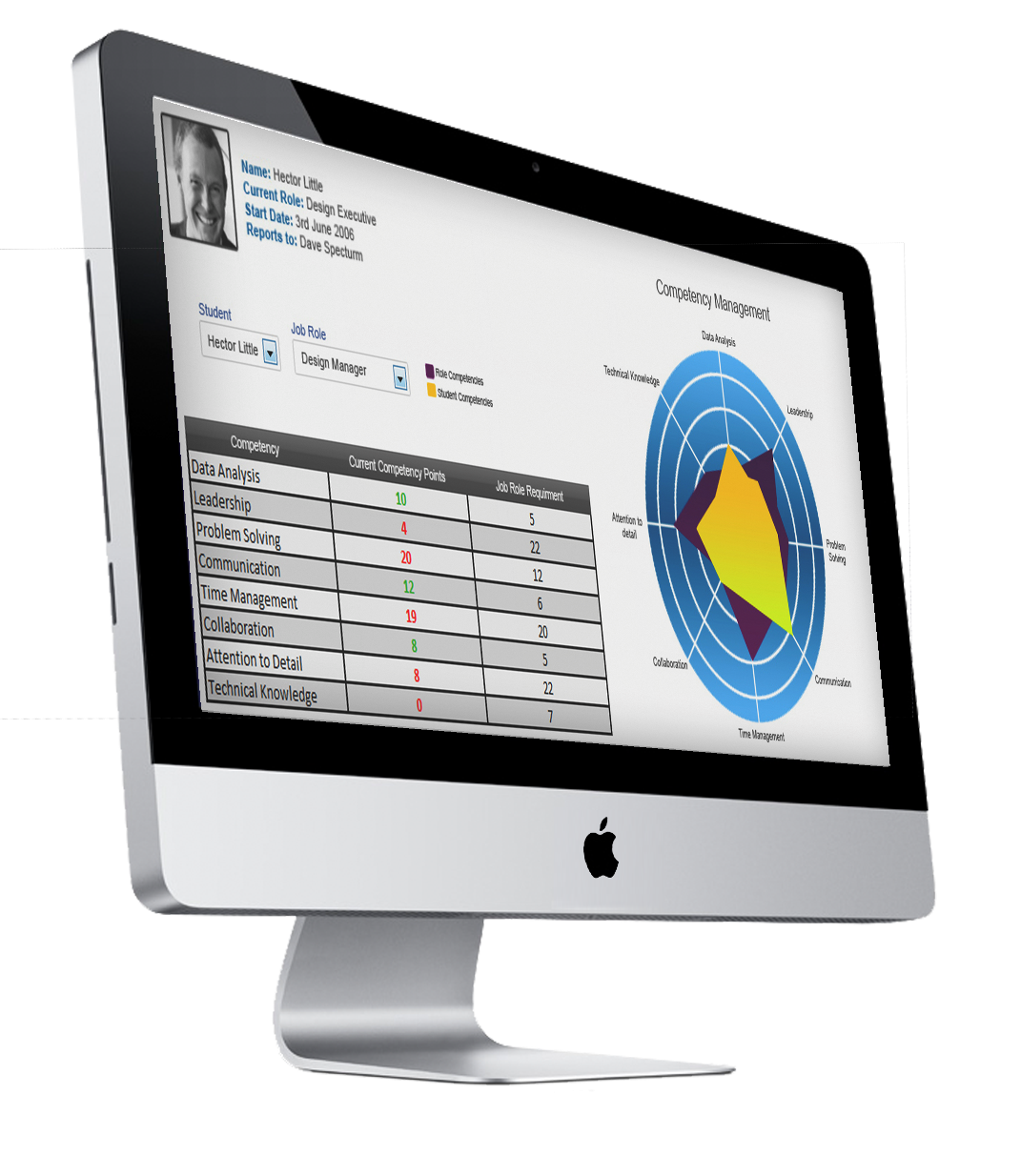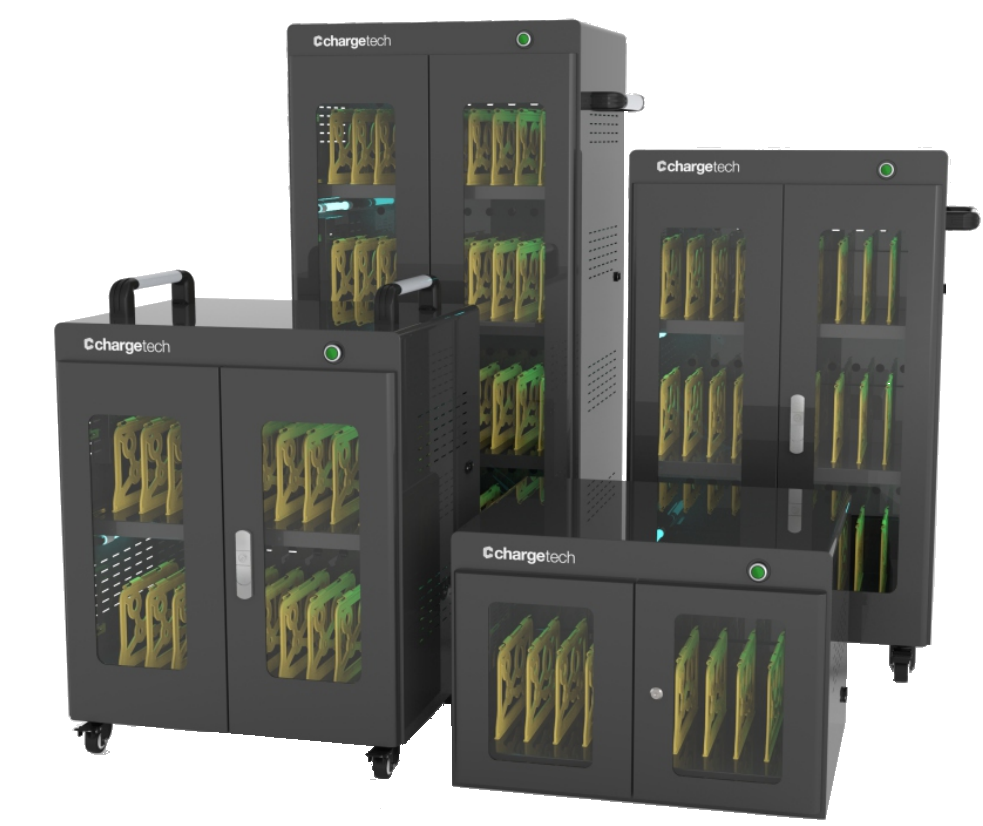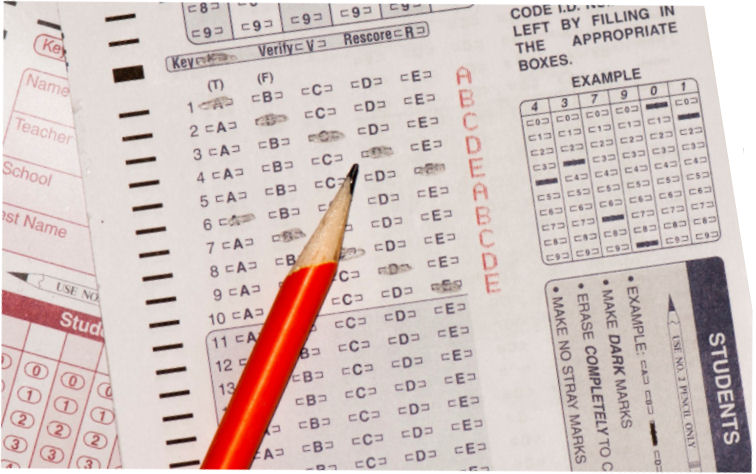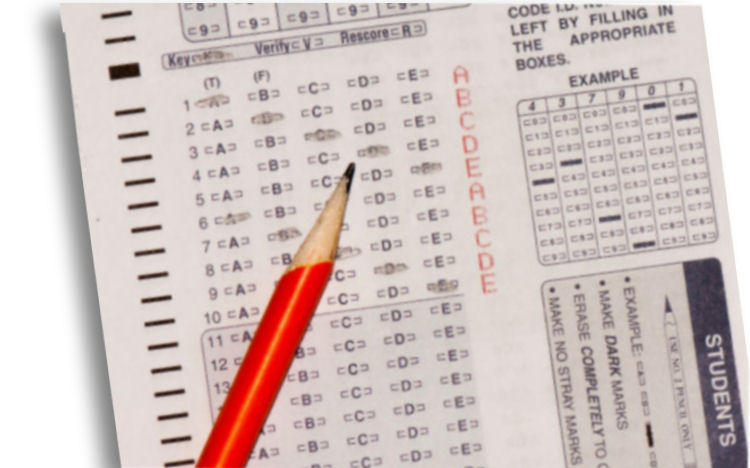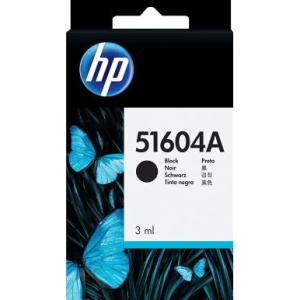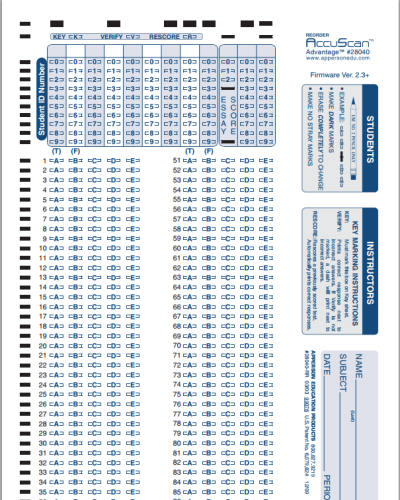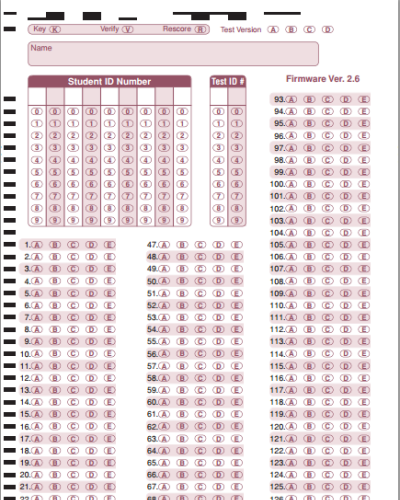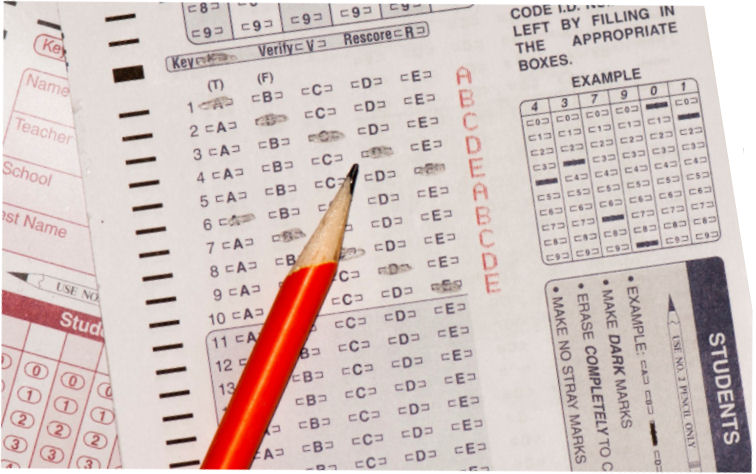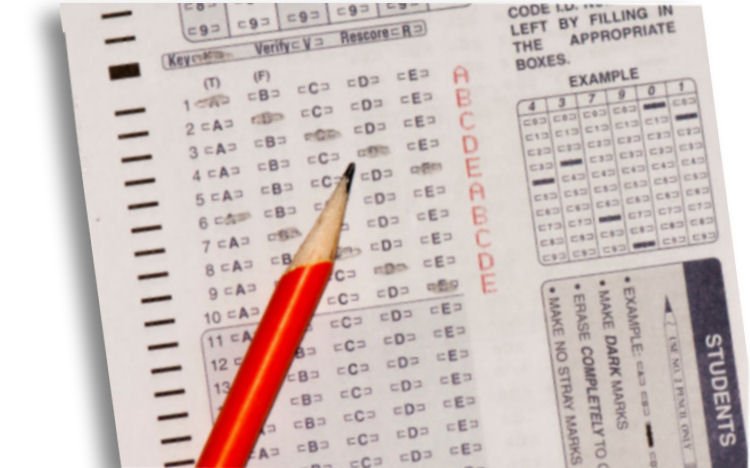
Optical Mark Recognition, often abbreviated as OMR, is an electronic method of collecting data from bubble multiple choice forms such as assessments and surveys by scanning paper to detect the presence or absence of a mark in a predetermined position. One of the most familiar applications of this technology is the use of bubble answer sheets in multiple choice question examinations common to high school and college classrooms.
Students mark their answers by darkening circles marked on a pre-printed sheet with a No. 2 Pencil. Each sheet is then automatically graded by the compatible scanner, such as the DataLink 3000 or DataLink 1200. Test results can be further compiled and analyzed by an OMR software such as the DataLink Connect.
Other than tests and assessments, there are many other applications for OMR technology, for example:
- Surveys
- Questionnaires
- Research data compilation
- Product evaluations
- Employee Timesheets
- Inventory Counts
- Membership subscription forms
- Lotteries and voting cards
- Mortgage loan, banking, and insurance applications
Alternative Recognition Technologies
Optical Character Recognition (OCR): The process of converting scanned images from typed or printed text into editable text. OCR differs from OMR in that it not only detects the presence of a mark but is required to identify the marking (typically a letter or a number). Also referred to as image scanning technology.
Intelligent Character Recognition (ICR): An advanced and smarter form of OCR which trains systems to recognize a larger number of fonts and cursive writing styles through machine learning.
Advantages of Optical Mark Recognition
Speed
Documents are scanned and large volumes of data can be inputted in mere minutes, severely outpacing the speed at which a staff member could process that same data. Case in point, the DataLink 3000 can process up to 3,000 forms per minute.
OMR systems also move quicker than image scanning alternatives. With image scanning, forms have to go through a reading and verification process during which the user must stop and make corrections before the scanning can continue. The input trays of most OMR scanners can hold 200 to 500 forms, in comparison to image scanners at schools which can typically carry just 50 to 100 forms. The user also needs to stand by and add forms as necessary. This makes the process significantly more time-consuming.
Accuracy
OMR is the most accurate data collection technology for capturing closed-ended responses. It is the only technology capable of achieving 99.9% accuracy without user intervention.
With OMR forms and scanners, users can significantly reduce human error. OCR systems can also achieve high accuracy, but not without human intervention. The accuracy of OCR and ICR systems also depends on the readability of the documents being scanned and language compatibility. Common errors that occur with OCR technology include misreading letters, skipping over letters that are unreadable, or mixing together text from adjacent columns or image captions.
Cost Efficiency
OMR allows users to load hundreds of forms at a time to be scanned automatically in a matter of minutes, which represents significant cost savings compared to paying staff members to manually grade assessments. OCR systems are much more complex and therefore more costly to acquire and maintain, especially as personnel is required to ensure the accuracy of information. Unlike OMR, image scanning systems also require costly software to capture data. That does not even factor in the hidden costs of toner and the time teachers spend printing and duplicating tests, verifying results and overseeing the scanning process.
For most schools and organizations who need to capture bubbled responses, traditional OMR is the best choice available on the market. OMR is superior to image scanning in cost, speed, and accuracy, while also being incredibly easy to set up and use.
Stay up to date with our news and promotions:


